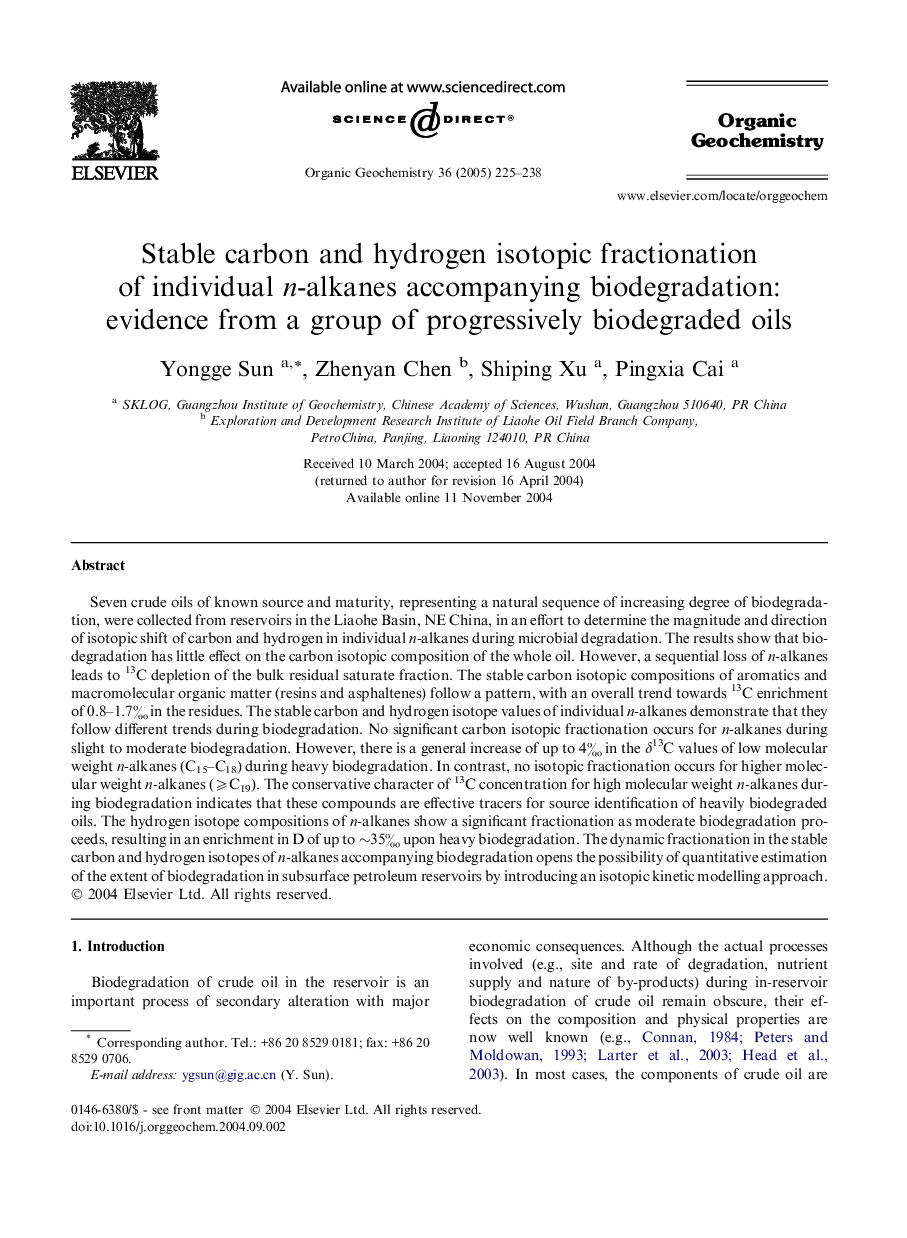| Article ID | Journal | Published Year | Pages | File Type |
|---|---|---|---|---|
| 9556342 | Organic Geochemistry | 2005 | 14 Pages |
Abstract
Seven crude oils of known source and maturity, representing a natural sequence of increasing degree of biodegradation, were collected from reservoirs in the Liaohe Basin, NE China, in an effort to determine the magnitude and direction of isotopic shift of carbon and hydrogen in individual n-alkanes during microbial degradation. The results show that biodegradation has little effect on the carbon isotopic composition of the whole oil. However, a sequential loss of n-alkanes leads to 13C depletion of the bulk residual saturate fraction. The stable carbon isotopic compositions of aromatics and macromolecular organic matter (resins and asphaltenes) follow a pattern, with an overall trend towards 13C enrichment of 0.8-1.7â° in the residues. The stable carbon and hydrogen isotope values of individual n-alkanes demonstrate that they follow different trends during biodegradation. No significant carbon isotopic fractionation occurs for n-alkanes during slight to moderate biodegradation. However, there is a general increase of up to 4â° in the δ13C values of low molecular weight n-alkanes (C15-C18) during heavy biodegradation. In contrast, no isotopic fractionation occurs for higher molecular weight n-alkanes (⩾C19). The conservative character of 13C concentration for high molecular weight n-alkanes during biodegradation indicates that these compounds are effective tracers for source identification of heavily biodegraded oils. The hydrogen isotope compositions of n-alkanes show a significant fractionation as moderate biodegradation proceeds, resulting in an enrichment in D of up to â¼35â° upon heavy biodegradation. The dynamic fractionation in the stable carbon and hydrogen isotopes of n-alkanes accompanying biodegradation opens the possibility of quantitative estimation of the extent of biodegradation in subsurface petroleum reservoirs by introducing an isotopic kinetic modelling approach.
Related Topics
Physical Sciences and Engineering
Chemistry
Organic Chemistry
Authors
Yongge Sun, Zhenyan Chen, Shiping Xu, Pingxia Cai,
